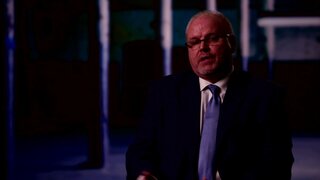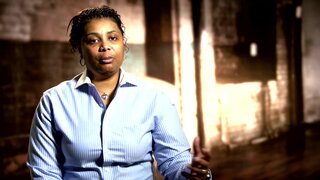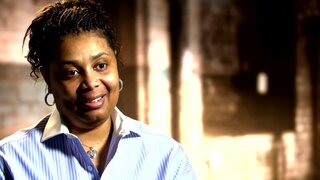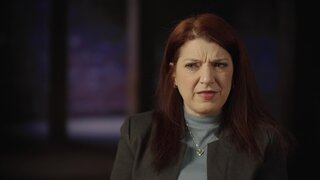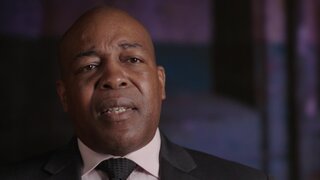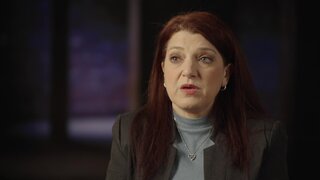Create a free profile to get unlimited access to exclusive videos, breaking news, sweepstakes, and more!
Did A Con Man Murder An Elderly NYC Widower Known For His Wealth And Generosity?
Christopher Cooley, a kind-hearted Upper East Side widower, was found dead in his locked apartment. Did his new friend he met while receiving cancer treatment at the hospital have something to do with it?
Christopher Cooley, 78, a wealthy widower known for his big-hearted generosity, lived in his New York City apartment surrounded by art, music, and precious treasures from global travels.
This Upper East Side penthouse is where Cooley was savagely murdered. The building super made the grim discovery on March 16, 2016, after Cooley’s sister called and expressed concern about not hearing from her brother.
Inside the apartment the super discovered Cooley’s decomposing body and called 911, according to “New York Homicide,” airing Saturdays at 9/8c on Oxygen.
Detectives found a necktie looped around Cooley’s neck, reported cbsnews.com. A pillow was stuffed over his face. His head was bashed by a glass lamp that was in shards on the floor.
"This was definitely a homicide,” said Det. Tommy Fischer, a retired NYPD homicide detective.
Investigators learned that the victim had no children but a devoted circle of family and friends who appreciated his idiosyncrasies. “Eccentric is good,” explained David Seymour, his nephew.
Newspapers had began piling up outside the victim’s apartment on March 5. Building workers had figured that Cooley had taken one of his periodic trips to Europe, as Cooley also had a home in Venice, Italy, the New York Post reported at the time of the murder. Police figured from the dates of the papers that he had been dead for 10 days or more when he was found.
Police interviewed neighbors and building personnel and collected evidence at the crime scene, including fingerprints and blood on the broken lamp pieces. They saw that Cooley was wearing an expensive watch and had nearly $200 in his pocket, which made the motive of burglary questionable. There was also no sign of forced entry.
Detectives ruled out Cooley’s family members as suspects early into the investigation, and based on interviews, investigators focused on Cooley’s ex-girlfriend, who was known as Apples. Numerous people described her decade-long relationship with the victim as volatile. Police spoke with Apples in her apartment not far from Cooley’s. They learned that Cooley was helping pay her rent, which essentially dropped her off the suspect list.
“She wasn’t going to kill her golden goose,” explained Rodriguez. Apples was cleared as a possible suspect.
A new line emerged from a woman in Tennessee who had a non-romantic friendship with Cooley. She told police that she had stayed with Cooley at his apartment. While there she noticed a bathrobe and slippers that didn’t look like they belonged to him. She said that Cooley told her that they belonged to a man he’d met at an NYC hospital. He was an investment banker and had stayed at the apartment for a couple of days.
“He said he was thinking of investing in one of the man’s financial ventures,” Robert K. Boyce, former NYPD chief of detectives, told producers.
Police knew of Cooley’s reputation for helping out people in need. They didn’t have his name but knew that Cooley met him at the hospital, where he had gone to be treated for a kidney ailment. (Cooley had had a kidney transplant six years earlier.)
Because of privacy rules, the hospital was unable to divulge names of anyone, but while going through his uncle’s financial records as the executor of the estate, David Seymour discovered a check dated March 2, 2016 for $1,425 with a signature that appeared to be a forgery. It was made out to Steve Garland.
Detectives considered that this could be the man Cooley befriended at the hospital. Cooley’s friend in Tennessee recognized Garland’s name.
A background check revealed that Garland was a con man — the kind “you hear about in movies,” explained Esha Ray, a New York Daily News editor. He posed as businessmen and CEOs and promised that he could turn a little money into a fortune. “He swindled an elderly couple out of money in Indiana,” said Rodriguez. “He was arrested numerous times for larceny type of crimes.”
Garland had been arrested in Indiana in 2016 for cheating a woman out of $84,000, according to Boyce. When he was released on a $20,000 bond, he headed for New York City — specifically the hospital where he was undergoing sinus cancer treatment.
Garland’s cancer didn’t keep him from his con games. Cooley’s wealth and generosity made him an ideal target, investigators theorized.
Around the time of Cooley’s murder, Garland didn’t appear for a court date in Indiana. He was subsequently arrested around 5 p.m. on March 2 by the NYPD on the Indiana warrant and brought to Rikers Island. The date of the bust didn’t fit the timeline of Cooley’s murder, which was believed to have occurred on March 5. Cooley’s autopsy, however, revealed that he was killed on March 2. That was the same date Garland got a round of cancer treatment.
When detectives went to pick up Garland regarding the Cooley case, he’d already been transported back to Indiana. Police faced the challenging task of getting him extradited back to NYC.
While awaiting extradition, police continue to build a case. They obtained a video of Garland “cashing the forged check” on the afternoon of March 2, said Fischer. The shirt he wore appeared to have blood on it.
Detectives needed physical evidence to connect Garland to Cooley’s murder. Police recovered shoes Garland was wearing on March 2. They were analyzed in the lab — and the DNA on them matched Cooley’s. Garland’s fingerprints also matched those found on the glass shards at the crime scene.
Rodriguez and Fischer went to Indiana to interview Garland. “He was very polite,” said Fischer, adding that he turned on the con. “Hey, NYPD, New York's Finest. I love you guys.’” Garland then refused to talk and asked for a lawyer. They didn’t get a confession.
But investigators had physical evidence and a motive. They believed that Cooley had discovered that Garland was conning him and a fatal fight resulted.
Before he was extradited back to New York, Garland, 62, died of sepsis at the Plainfield Correctional Facility in Indiana, according to an August 2017 New York Post report.
“He got what he gave,” said Rodriguez. “He was an evil guy.”
For more on this case and others like it, watch “New York Homicide,” airing Saturdays at 9/8c on Oxygen or stream episodes here.
